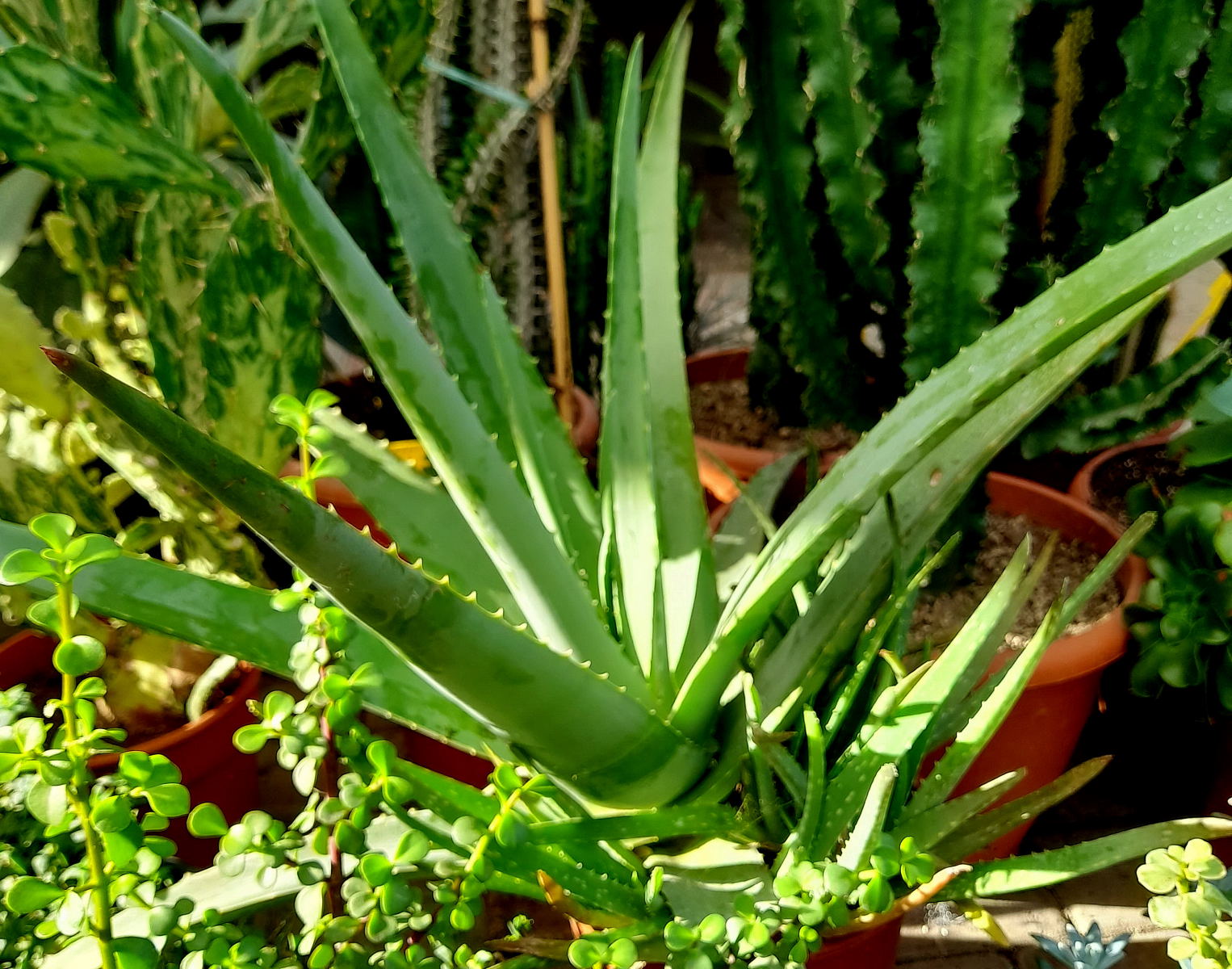The Asphodelaceae family is a group of plants in the order Asparagales, comprising about 20 genera and around 800 species. This family is primarily found in temperate and tropical regions, with many species thriving in arid and semi-arid environments. It includes a range of herbaceous plants, including perennial herbs, shrubs, and small trees, some of which are known for their ornamental value or medicinal properties.
General Description
Plants in the Asphodelaceae family are generally herbaceous perennials, though some are shrubs or small trees. They are characterized by:
- Leaves: Linear or lance-shaped, usually arranged in basal rosettes or in a spiral along the stem.
- Flowers: Often showy, with six petaloid tepals that are usually white, yellow, or red. The flowers are often grouped in spikes or racemes.
- Fruits: Typically capsules that contain numerous small seeds.
Many species in this family have adapted to survive in dry conditions, with thickened stems or roots that store water, making them resilient in arid environments. They are often used in ornamental horticulture for their striking flower spikes and their drought tolerance.
Chemical Composition
The Asphodelaceae family includes plants that contain a variety of bioactive compounds. Some common chemical constituents include:
- Alkaloids: Certain species, particularly from the Aloe genus, are known for containing alkaloids with medicinal properties.
- Flavonoids: Found in many species, contributing to antioxidant activity and health benefits.
- Anthraquinones: Present in species such as Aloe vera, known for their effects on skin health and their laxative properties when consumed in higher quantities.
These compounds are important for the plants' medicinal uses, such as in the treatment of skin conditions, digestive health, and other ailments.
Physical Properties
Plants in the Asphodelaceae family typically have thick, fleshy leaves or stems that help in water storage, an adaptation for surviving in dry climates. The leaves can be sword-shaped or lanceolate, and the flowers are typically arranged in racemose or paniculiform inflorescences. These flowers are often large, with bright colors, making them attractive to pollinators like bees and birds.
Some species, such as Aloe and Gasteria, have succulent properties, storing water in their tissues. Many species in this family have a characteristic rosette or clump growth form, which helps conserve moisture.
Production Process
Plants in the Asphodelaceae family are propagated mainly by seed, though some species can be propagated through offsets, division, or cuttings. For ornamental purposes, plants are often grown from seed in controlled conditions, while species like Aloe vera are cultivated for their medicinal properties.
In the case of Aloe vera, the leaves are harvested for the gel inside, which is used in various cosmetic and medicinal products. The gel is typically extracted by slicing the leaves open and scraping the inner tissue. The production of aloe-based products requires careful processing to maintain the gel's beneficial properties.
Applications
Medicinal
Several species in the Asphodelaceae family are widely used in traditional and modern medicine. Some of the most notable plants include:
- Aloe vera (Aloe barbadensis miller), one of the most well-known medicinal plants, used for its soothing and moisturizing effects on the skin. It is also used as a laxative when consumed in certain forms, although caution is needed as it can be toxic in large amounts.
- Aloe ferox, another species used for its purgative properties and for its gel, which has similar soothing effects on the skin.
- Gasteria, a genus closely related to Aloe, known for its use in folk medicine for treating wounds and skin conditions.
Cosmetic
The Asphodelaceae family is famous for species like Aloe vera, which is widely used in cosmetic products such as moisturizers, sunburn relief gels, and anti-aging formulations. Aloe vera gel is especially prized for its hydrating, soothing, and anti-inflammatory properties, making it a staple in many skincare routines.
Additionally, the saponins found in some members of this family can have cleansing properties and are used in soaps and shampoos.
Environmental
Many species in the Asphodelaceae family, especially those in the Aloe genus, are adapted to survive in arid climates. Their ability to store water makes them useful in landscaping for xeriscaping (water-efficient landscaping). They are also planted in regions prone to drought as ornamental plants due to their ability to thrive with minimal water.
Ornamental
The Asphodelaceae family is widely used in ornamental horticulture, with many species valued for their attractive flowers. Species like Aloe vera, Aloe arborescens, and Gasteria are grown for their showy blooms, which are often brightly colored and are used in gardens, landscapes, and as houseplants.
Environmental and Safety Considerations
While many plants in the Asphodelaceae family are safe for medicinal or cosmetic use, some species contain compounds that can be toxic if used improperly. For example, Aloe vera gel is generally safe for topical use but can cause adverse effects if consumed in large quantities. Care should be taken when using aloe-based products to avoid excessive ingestion.
Some species of Aloe, such as Aloe latex, which is extracted from the skin of the leaf, can cause gastrointestinal discomfort and are considered toxic if ingested in large amounts.
INCI Functions
- Moisturizing: Helps maintain skin hydration.
- Soothing: Reduces skin irritation and redness.
- Anti-inflammatory: Reduces inflammation in the skin.
- Cleansing: Provides gentle cleansing properties in cosmetic products.
Conclusion
The Asphodelaceae family is a significant group of plants with a wide range of applications in medicine, cosmetics, and horticulture. Many species, such as Aloe vera, have been valued for their healing properties for centuries. These plants are not only beneficial for skin care and medicinal purposes but are also important for landscaping, particularly in water-scarce environments. With their ability to thrive in arid climates and their rich chemical composition, plants in the Asphodelaceae family remain a key resource in both traditional and modern applications.
![]() Asphodelaceae
Asphodelaceae 
